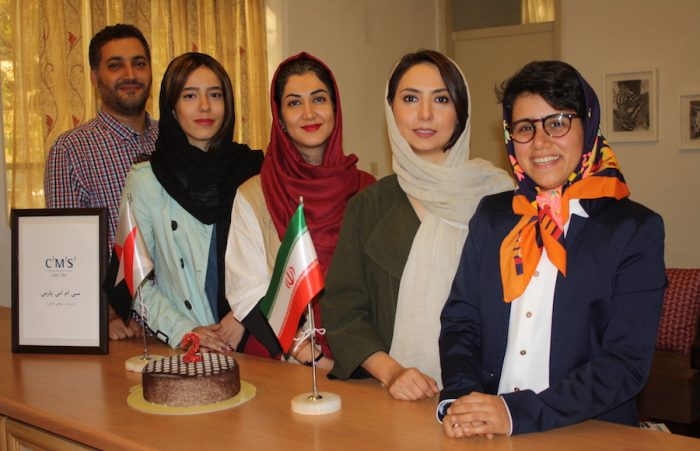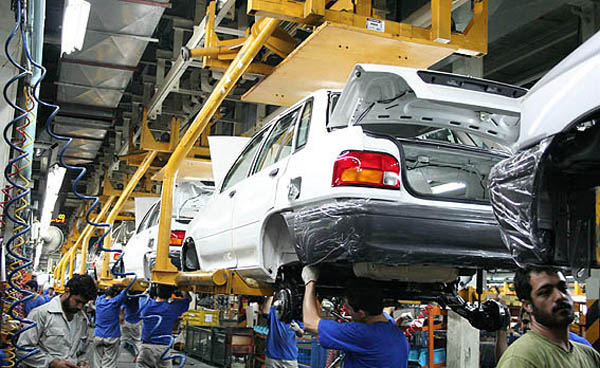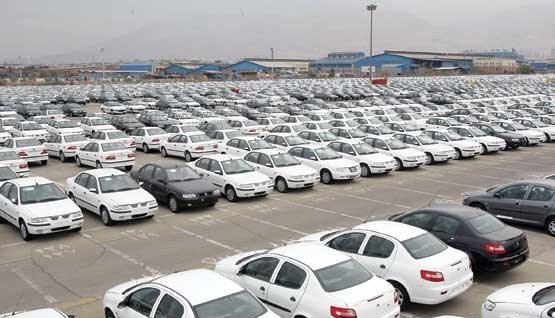
Iran Economy in Brief (IEB) becomes two years old
In November 2015, we started sending Iran Economy in Brief to 100 readers. Today our English and Farsi newsletters have nearly 7000 readers. This growth would have not been possible without the help of my colleagues, neither without the support of our sponsors, CMS Pars and Danieli Co.
More determined than ever, we aim to grow and add new features. Your opinions, suggestions and comments would help us keep on the right track and provide what our readers are mainly eager to receive, so please send us your thoughts.
SAIPA’s new boss
The Minister of Industries, Mining and Trades, Mohammad Shariatmadari, appointed MohsenGhasem Jahrudi as the CEO of SAIPA Automotive Group. He will be replacing Mehdi Jamali who led SAIPA for two years. Mr Jahrudi, the new boss, was previously the CEO of Iran Khodro Aluminum Casting Company and before that has held various positions within the automotive industry such as vice presidency of SAPCO and membership on the Board of Directors at Radiator Iran Co. which is a subsidiary of SAIPA.
SAIPA Public Joint Stock Company was established in 1965 and employs 12000 people. Last year, SAIPA Group manufactured 570.000 automobiles, pick-ups and trucks. With a market share of 42%, this company is Iran’s second largest automotive manufacturer after Iran Khodro (with 48% market share). SAIPA’s main shareholders include, the Industrial Development & Renovation Organization of Iran (17.3%), Rena Industrial Group Investment Company (16.3%) and the Steel Worker’s Support and Retirement Fund (16%).
Slowly red meat becomes luxury
The price of red meat was once again raised. Blended beef which is among the most widely used types of red meat was priced at 390 thousand IRR per kilogram (11 USD/Kg at official exchange rate). On average, each kilogram of boneless leg of lamb is sold at 450 thousand IRR per kilogram. These prices are often associated with imported meat. High quality, domestically produced red meat, for example from Damavand is sold at 800 thousand IRR per kilogram. Based on figures from official slaughterhouses, in 2013, 377.000 tons of red meat was produced in Iran. The Central Bank estimates that the average Iranian household consumes 40 kg of red meat per year. The price of red meat is considered extremely high in particular because the average annual income of an urban household in Iran is 7000 euros.
Iranians do not take the train
In spite of the large number of finished railway projects in the past three years, Iran Railways believes that a fundamental change has not taken place to increase the shares of rail travel between cities.
Ahmad Khodai, Deputy Governor of the country’s railways said: “In spite of the 4% growth in passenger transportation this year, trains are not people’s first choice and people prefer to travel by car. Currently, trains have an 8% share of passenger transport and in order to increase that to 20% by the end of the sixth development plan (until 2021), we have a difficult journey ahead.”
The Rail Transport Companies Guild says that in the past twelve years, not only have we not seen an increase in passenger transport via the rail network, in some year the trend has been downwards.
Thousands kilometers of roads need thousands billions Dollars
The Roads and Road Transport Organization has estimated that in order to maintain the 215 thousand kilometers of rural, main roads, byroads and highways; an annual credit of 70 thousand billion IRR ($1.98b) is required.
The Head of the Road Transport Organization, Davoud Keshavarzian said: “The total credit of the Road Transport Organization is 15 thousand billion IRRs. Half of the credits are provided via national and half are provided via provincial sources to maintain the non-arterial roads.”
From next Iranian fiscal year (i.e. March 2018 to 2019), this company has banned the operation of heavy vehicles over 50 years old. Based on numbers from the Road Transport Organization, 350 thousand vehicles are operational in the intercity fleet and approximately 500 thousand people are employed in this sector.



